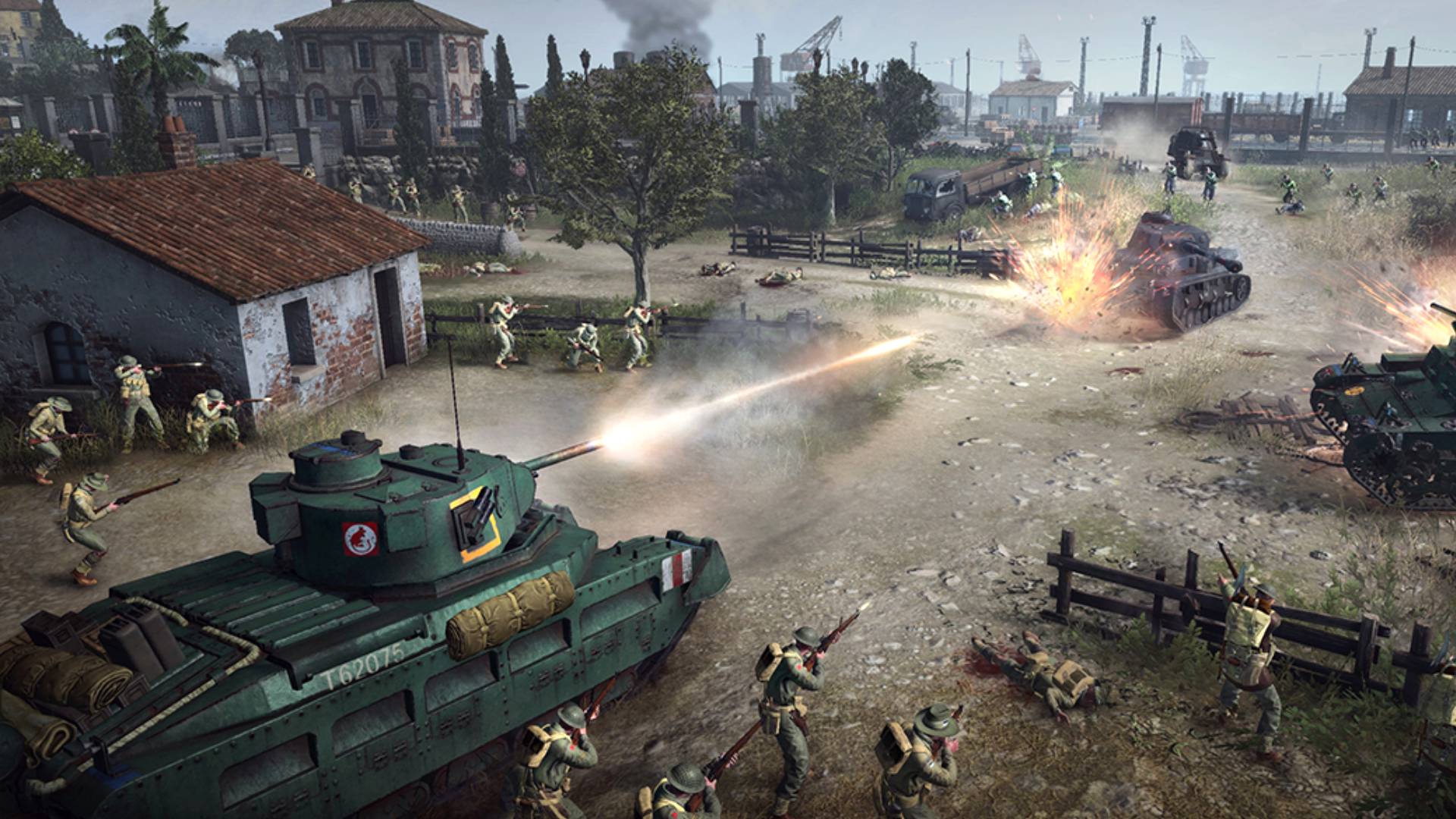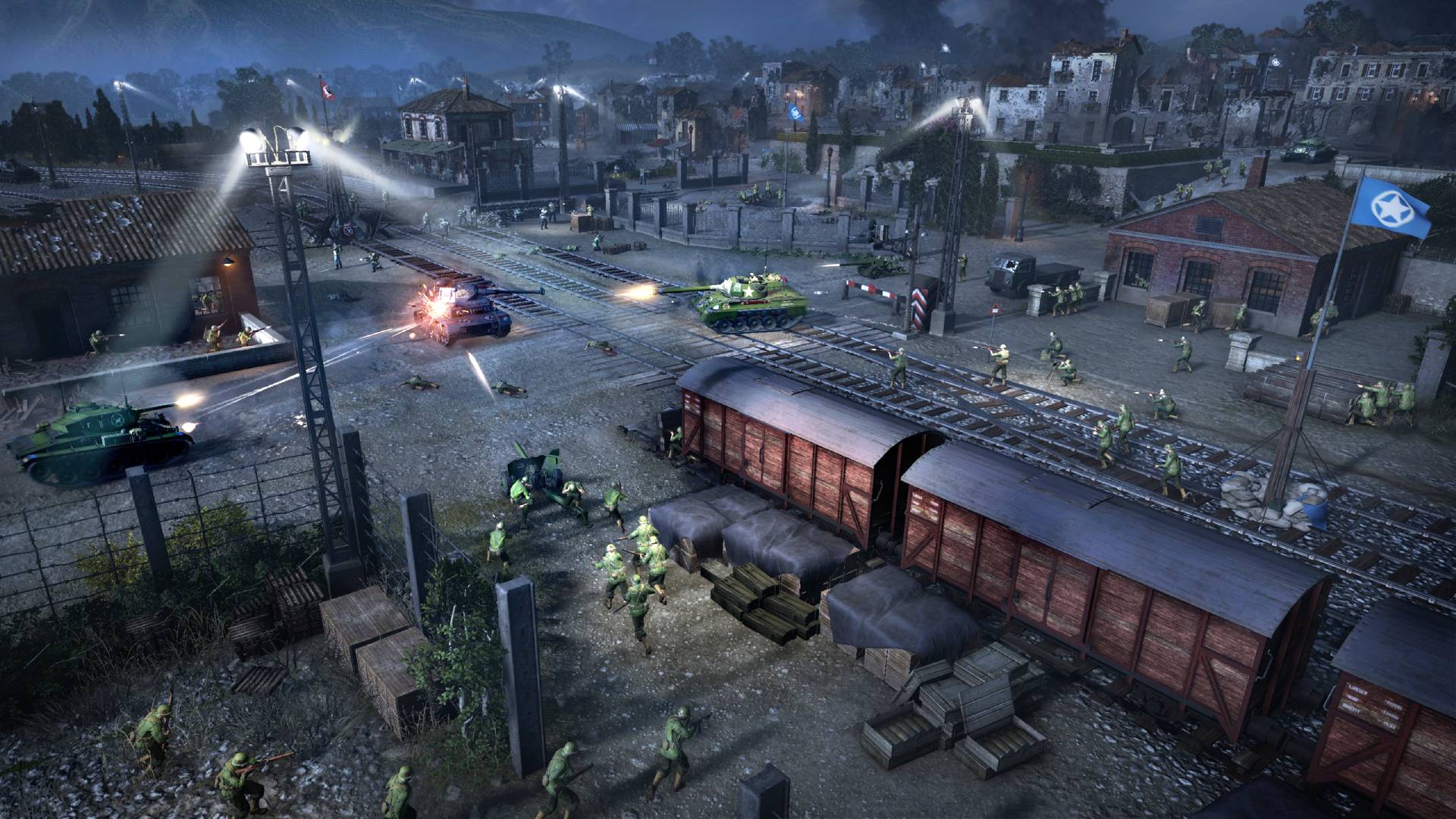Company of Heroes 3 is a WW2 action movie masking as a strategy game
The Spielberg effect

Nobody is moving but a lot is going on. The enemy has hunkered down in the Italian town square. My riflemen are healing, my Sherman tank has driven into position, and several infantry squads have come up to provide reinforcements.
Then everything stops. I’ve engaged Company of Heroes 3’s new real-time pause feature, letting me suspend the game and queue up commands for my troops to follow once the action starts up again.
I prime my heavy machine gun team to move up a nearby road, marking several waypoints on their route to avoid German infantry, then entrench behind a line of sandbags. My Sherman, meanwhile, will dispatch the enemy’s light tank and sidle up to their mortar, crew guns blazing. Finally, it’ll charge into the square’s center, where my flamethrower-carrying engineers will sweep up any stragglers.
My soldiers overrun the square in a coordinated assault, topped off by my Shermans sending the few remaining riflemen running
I hit the spacebar and the game resumes. Everything plays out exactly as commanded. My soldiers overrun the square in a precisely coordinated assault, topped off by my Sherman’s acceleration into the enemy position that sends their few remaining riflemen running. It could be poetically described as a grim dance of dramatic bloodshed. I’m willing to settle for cinematic excellence.
Theater of war

Real-time pause is just one of the many new features in Company of Heroes 3 – the upcoming third game in Relic’s acclaimed World War 2 RTS series – but it best captures the game’s habit of producing astonishingly theatrical moments like this one in the town square.
Pausing lets your fingers keep up with your brain, and implement tactical maneuvers that would take rapid-fire mouse clicking to pull off
I made liberal use of the feature in my preview, tapping the spacebar every time I felt even slightly overwhelmed by the number of units and explosions on-screen – which happened fairly often in the heated RTS battles. Pausing the game lets you take a step back, allow your fingers to keep up with your brain, and implement grand tactical maneuvers that would otherwise take rapid-fire mouse clicking to pull off, not to mention a whole lot of luck.
It’s not just a handy quality-of-life feature that slower players can lean on, though. I found it fundamentally changed the pace of the game, buoying Company of Heroes 3’s moment-to-moment action to a rate rarely seen in strategy games. The option to temporarily pause the game at your leisure actually accelerates its pace rather than stalls it. Like easing congestion on a packed motorway by introducing slower speed limits, real-time pause makes room for the biggest fighting moments to sing and the slowest to quickly resolve.
Get daily insight, inspiration and deals in your inbox
Sign up for breaking news, reviews, opinion, top tech deals, and more.
The four missions I played rarely let that momentum dwindle. Series fans will find them familiar enough – ship out to a partially destroyed map to capture territory, accumulate resources, and bolster your force of soldiers. Objectives need to be secured, and incoming attacks countered. Your NPC advisors will bark orders, and you will upgrade your units with gear you scavenge from the battlefield.
The small screen

Most battles in Company of Heroes 3’s Italian campaign take place in claustrophobic cities and crumbling urban environments, not unlike those from the French and German towns in the previous games. But this sequel’s improved environmental destruction adds an extra flourish. As whole buildings that once offered my soldiers essential cover explode into brick shards, and church steeples topple over after another round of shelling, I wonder if I should be grinning quite so widely in the face of rampant destruction.
By contrast, in Company of Heroes 3’sNorth Africa campaign you fight across barren desert plains that sport little cover beside the odd craggy hill or trench. It’s a radical shake-up, leaving infantry especially vulnerable to sporadic hit-and-run attacks by enemy vehicles. The tactics I used in the Italian campaign had little success here, so when I had to defend two command posts against a British counter-attack, my troops – that I’d unwisely left milling about – soon keeled over. Commanding the forces here felt less like a valiant push to victory than a hard slog for survival.
I watched a previewer lose almost his entire infantry force in a single artillery strike. A harsh lesson in careless military tactics
Even Company of Heroes 3’s multiplayer brought out a few dramatic moments. A one-on-one skirmish turned into a brutal battle of attrition over a central command point, culminating in a final, frenetic tank charge that left no one standing other than my engineers in a hollow victory. In another game, I watched a fellow previewer lose almost his entire infantry force in a single artillery strike. A harsh lesson in careless military tactics, perhaps, but also a fantastically memorable turning point that wouldn’t be out of place in a WW2 popcorn flick.
That Company of Heroes 3 plays like a Hollywood film is no surprise. The series has drawn comparisons to Band of Brothers, Saving Private Ryan, and other war films since its debut in 2006, but this third game goes beyond what we’ve previously seen. It’s a refinement of the series’ cinematic promise, realized through slight but significant enhancements. I can’t wait to create more movie-worthy moments when it launches next year.

Callum is TechRadar Gaming’s News Writer. You’ll find him whipping up stories about all the latest happenings in the gaming world, as well as penning the odd feature and review. Before coming to TechRadar, he wrote freelance for various sites, including Clash, The Telegraph, and Gamesindustry.biz, and worked as a Staff Writer at Wargamer. Strategy games and RPGs are his bread and butter, but he’ll eat anything that spins a captivating narrative. He also loves tabletop games, and will happily chew your ear off about TTRPGs and board games.